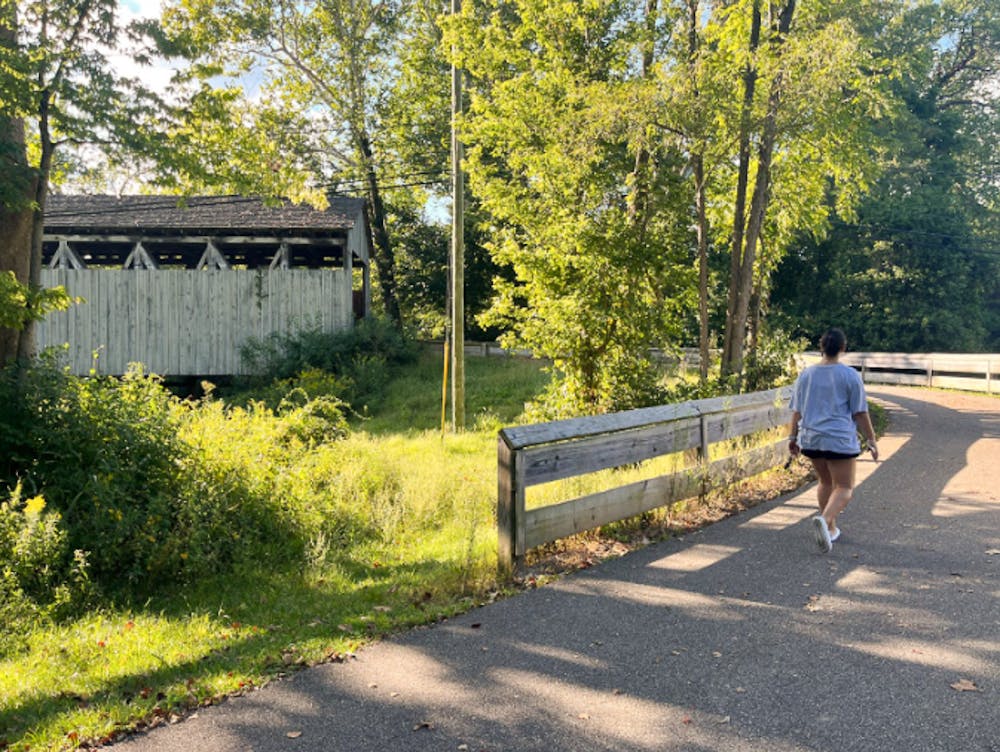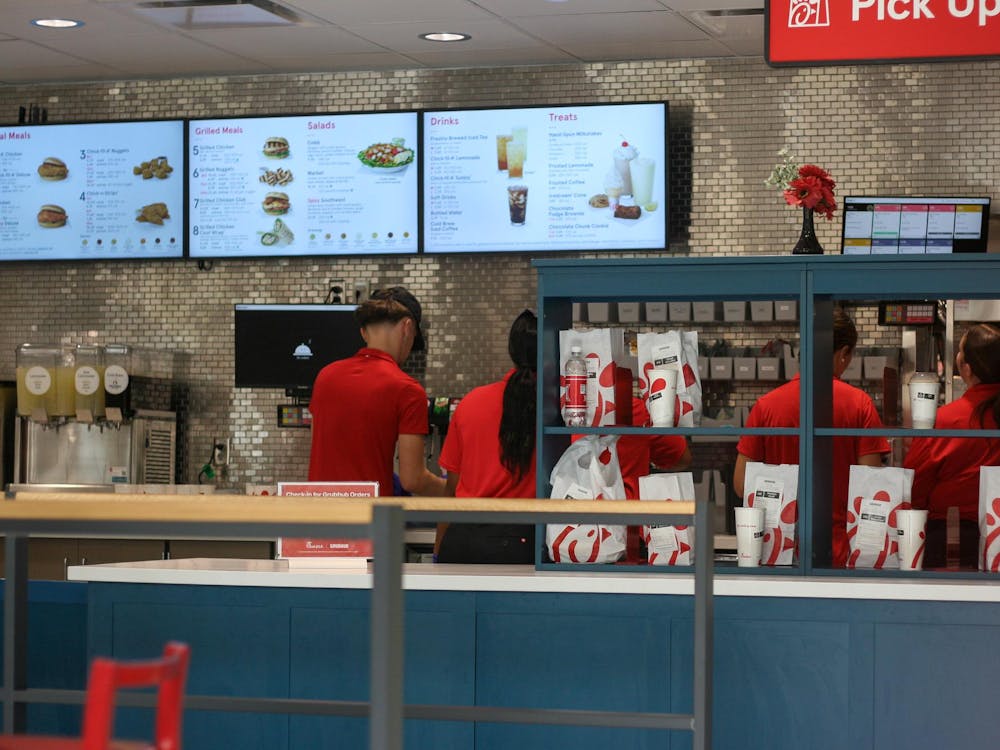For college students navigating Oxford without a car, middle school students without access to busing and those looking to reduce carbon emissions, alternative transportation is essential. The Oxford Area Trails System (OATS) project aims to create a 12-mile path around the city, making alternative forms of transportation easier.
However, implementing such a wide-scale project across the city comes with challenges.
According to Oxford City Council member David Prytherch, one of these challenges is the acquisition of land. While some phases of the project, such as those on land owned by Miami University or the city of Oxford, go without a hitch, it is more difficult to carve a path that intersects with privately-owned land with multiple stakeholders.
Prytherch said the most recently completed Phase Four, connecting Talawanda Middle School, Dana Drive, Brookville and the Owls Landing subdivision, did need to acquire private property and instead used the public right of way.
“If you see a street, it’s part of this wider thing called a public right of way that basically, even though it may be your front yard and you own it, is part of this thing that the city has a right to develop transportation facilities inside of,” Prytherch said.
The final addition to this phase will be a new pedestrian-activated traffic signal at the entrance of Dana Drive and Oxford Riley Road. This intersection was regarded as busy and unsafe. Prytherch said he hopes the new traffic signal will help middle school students walk to school safely.
Assistant city manager Jessica Greene said there were a few residents unhappy with the path of Phase Four. The removal of gardens in the path of the trail upset some residents along Brookville Avenue.
Greene said she believes these challenges and disagreements are worth working through because citizens have led the push for this project. She said the original project was citizen led, and has been one of the top priorities for citizens in comprehensive plans. In 2018, a tax levy was passed to support the funding of the project.
“We passed a levy in 2018 of residents saying, ‘Yeah we believe in this so much we’re willing to pay taxes to do it,’” Greene said. “And so all those reasons mean it’s a public amenity and a public necessity for transportation that’s worth fighting for.”
The next phase of the project, Phase Five, may require fighting through more conflict. This path will connect the Talawanda High School and Middle School to Peffer Park and the future Chestnut Street Multimodal Station. It also crosses through private property.
City engineer Scott Otto said that the city is working with 11 private property owners, and that they have reached an agreement with nine. The city is working to acquire easements that give them the right to build and maintain the trail in a certain area on someone else’s property.
Greene said that the city will try to pursue an agreement with the remaining two property owners in court.
Enjoy what you're reading?
Signup for our newsletter
“This is the first one where we’ve had [to take] private property, and so that has been a big learning process on how to do that, and we are getting ready to begin that process,” Greene said.
An additional challenge to completing Phase Five is the construction of a large bridge over the railroad, including mesh across the sides and top. Otto said he hopes this will further improve Oxford’s connectivity.
“I think it’d be a very important connection piece and in the trail system,” he said. “Being able to connect the two schools with …a bridge over the railroad.”
Prytherch said the city does its best to put the planning through a public process, and that he hopes this process will bring about a trail that increases the connectivity and transportation options in the city.
“It’s just an enormous team effort that it’s been a privilege to be a part of and see like that,” Prytherch said. “We’re a small city, but we still can dream big and marshal the resources to get it done, which is just very empowering.”
The construction process of Phase Five will begin once the remaining private property disputes are resolved.




